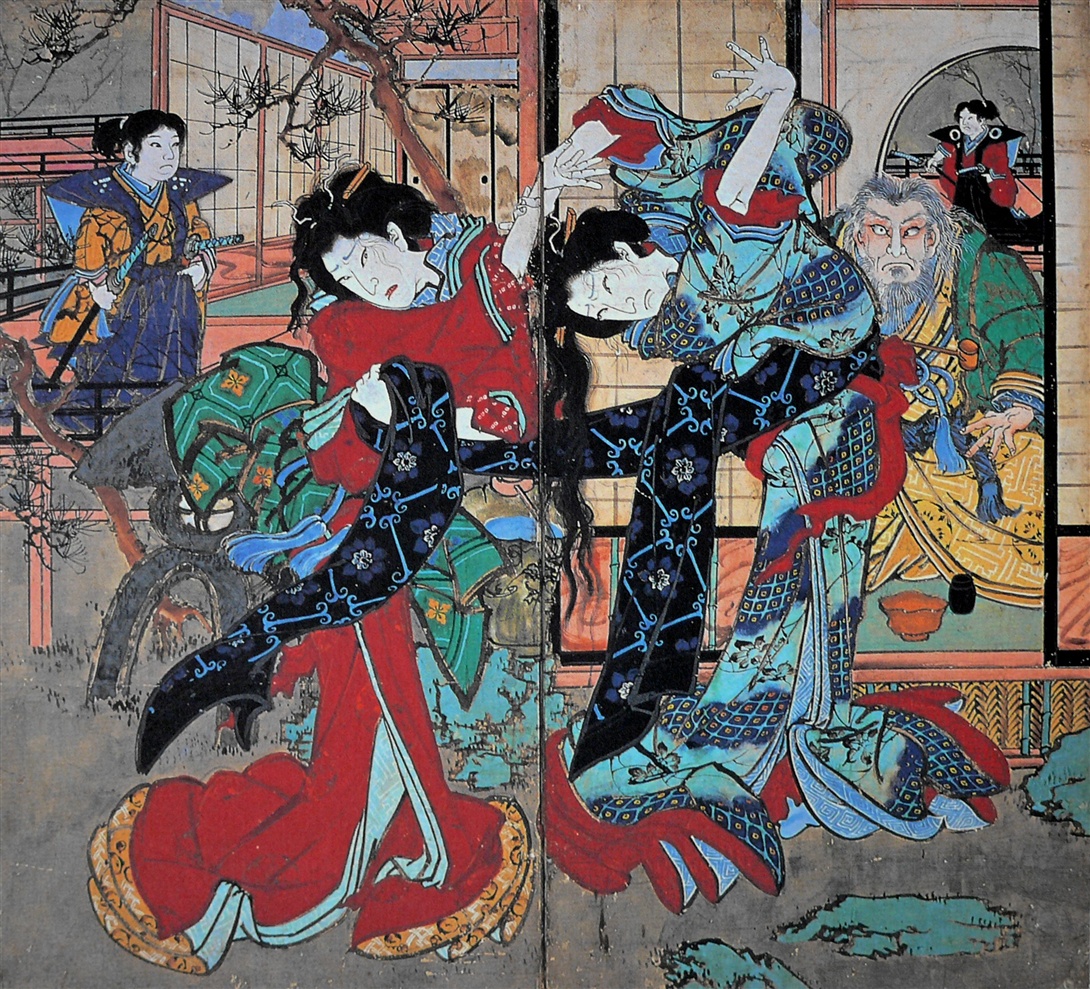Hirose Kinzō on:
[Wikipedia]
[Google]
[Amazon]
 (1812–1876), also known as , was a
(1812–1876), also known as , was a
 The is located in Kōnan in
The is located in Kōnan in
Ekin Museum
*
{{DEFAULTSORT:Hirose Kinzo People of Edo-period Japan 1812 births 1876 deaths 19th-century Japanese painters People from Kōchi Prefecture
 (1812–1876), also known as , was a
(1812–1876), also known as , was a Japanese painter
This is a list of Japanese artists. This list is intended to encompass Japanese who are primarily fine artists. For information on those who work primarily in film, television, advertising, manga, anime, video games, or performance arts, please se ...
of the late- Edo, Bakumatsu
was the final years of the Edo period when the Tokugawa shogunate ended. Between 1853 and 1867, Japan ended its isolationist foreign policy known as and changed from a feudal Tokugawa shogunate to the modern empire of the Meiji governm ...
, and early- Meiji periods.
Life
Born to a hair-dresser in Kōchi in 1812, Kinzō studied under before joining the retinue of a Yamauchi princess on her journey to Edo in 1829. There he studied under and , painters of the Kanō and Tosa schools. Returning after three years with theart name
An art name (pseudonym or pen name), also known by its native names ''hào'' (in Mandarin), ''gō'' (in Japanese), ''ho'' (in Korean), and ''tên hiệu'' (in Vietnamese), is a professional name used by East Asian artists, poets and writers. The ...
, he served as head painter for the , chief retainers of the Tosa Domain
The was a feudal domain under the Tokugawa shogunate of Edo period Japan, controlling all of Tosa Province in what is now Kōchi Prefecture on the island of Shikoku. It was centered around Kōchi Castle, and was ruled throughout its history by ...
. However, accused by a rival of forging a work by Kanō Tan'yū
was a Japanese painter of the Kanō school. One of the foremost Kanō painters, many of the best known Kanō works today are by Tan'yū.
Biography
His original given name was Morinobu; he was the eldest son of Kanō Takanobu and grandson ...
, he was dismissed from his post. Little is known of his next ten years. Subsequently prolific, his surviving works include 70 ''shibai-e'' byōbu
are Japanese folding screens made from several joined panels, bearing decorative painting and calligraphy, used to separate interiors and enclose private spaces, among other uses.
History
are thought to have originated in Han dynasty C ...
on theatrical subjects, nine ema, thirteen , two emakimono
or is an illustrated horizontal narration system of painted handscrolls that dates back to Nara-period (710–794 CE) Japan. Initially copying their much older Chinese counterparts in style, during the succeeding Heian (794–1185) and Ka ...
, and seven ''warai-e'' or shunga
is a type of Japanese erotic art typically executed as a kind of ukiyo-e, often in woodblock print format. While rare, there are also extant erotic painted handscrolls which predate ukiyo-e. Translated literally, the Japanese word ''shunga' ...
. He also had many disciples.
Ekin Museum
 The is located in Kōnan in
The is located in Kōnan in Kōchi Prefecture
is a prefecture of Japan located on the island of Shikoku. Kōchi Prefecture has a population of 757,914 (1 December 2011) and has a geographic area of 7,103 km2 (2,742 sq mi). Kōchi Prefecture borders Ehime Prefecture to the northwest and ...
. Twenty-three of his are stored in the museum, with two visible through peephole
A peephole, peekhole, spyhole, doorhole, magic eye, magic mirror or door viewer, is a small, round opening through a door from which a viewer on the inside of a dwelling may "peek" to see directly outside the door. The lenses are made and arr ...
s throughout the year.
Ekin Festival
On the third weekend in July, his folding screens on dramatic subjects are displayed at night by candlelight in the streets of Akaoka in Kōnan.See also
*List of Cultural Properties of Japan - paintings (Kōchi)
This list is of Japanese painting, paintings designated in the category of for the Prefectures of Japan, Prefecture of Kōchi Prefecture, Kōchi, Japan.
National Cultural Properties
As of 1 July 2019, two Important Cultural Properties of Japan, ...
References
External links
*Ekin Museum
*
{{DEFAULTSORT:Hirose Kinzo People of Edo-period Japan 1812 births 1876 deaths 19th-century Japanese painters People from Kōchi Prefecture